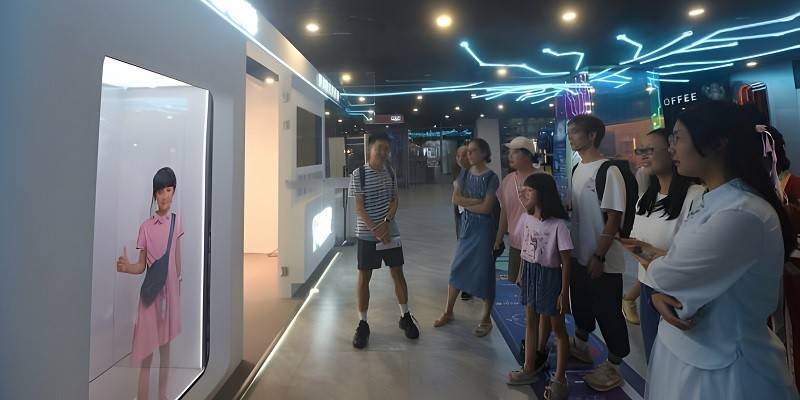Digital Twins: The Virtual Replicas Revolutionizing Industries
Digital twins are virtual replicas revolutionizing industries through their ability to optimize operations and improve decision-making. In today’s fast-paced world, organizations are constantly seeking innovative solutions to gain a competitive edge and enhance efficiency.
Enter digital twins, which offer a game-changing approach by creating a virtual counterpart of a physical asset or process, providing real-time insights, simulations, and predictive analytics. This technology enables businesses to minimize risks, reduce costs, and unlock new growth opportunities.
From manufacturing and healthcare to transportation and construction, digital twins are transforming various sectors by offering a comprehensive understanding of assets, facilitating remote monitoring and maintenance, and driving data-driven improvements. With the potential to revolutionize industries, digital twins are poised to shape the future of business operations.

What Are Digital Twins?
Digital twins are virtual replicas of physical objects, processes, or systems that enable real-time monitoring, analysis, and optimization. They have gained significant attention in various industries for their potential to improve operational efficiencies, predict performance, and facilitate decision-making.
Definition And Concept
A digital twin is a dynamic virtual representation of a physical entity or system, encompassing its attributes, behaviors, and relationships. It integrates data from various sources, including sensors, IoT devices, and historical records, to mimic the real-world counterpart in a digital environment.
Types Of Digital Twins
Digital twins can be categorized into several types based on their applications and functionalities. These include:
- Product Twins: Representing individual physical products or components.
- Process Twins: Simulating manufacturing, production, or operational processes.
- System Twins: Emulating complex systems such as smart buildings or infrastructure networks.
Applications Across Industries
Digital twins, the virtual replicas revolutionizing industries, have applications in various sectors, transforming the way businesses operate. Let’s explore some of the key industries leveraging this groundbreaking technology.
Manufacturing
In the manufacturing industry, digital twins provide immense value by replicating physical assets, optimizing production processes, and enhancing overall efficiency.
Some of the specific applications of digital twins in manufacturing include:
Quality Control:
Creating virtual replicas of products allows manufacturers to simulate quality-control tests and identify potential defects before physical production.
Predictive Maintenance:
By monitoring digital twins of machinery and equipment, manufacturers can detect anomalies and predict maintenance requirements, preventing costly breakdowns.
Process Optimization:
Designing digital twins of production lines enables manufacturers to analyze and optimize workflow, minimize waste, and increase productivity.
Healthcare
Digital twins are revolutionizing the healthcare industry, enabling personalized treatments and improving patient outcomes.
Some of the applications of digital twins in healthcare include:
Surgical Planning:
Using digital twins of patients’ organs, surgeons can plan and practice complex procedures, reducing errors and improving surgical outcomes.
Medical Imaging:
Digital twins help analyze medical images more accurately, aiding in diagnoses and treatment plans.
Predictive Medicine:
By collecting patient data and creating digital replicas, healthcare professionals can predict disease progression, customize treatments, and improve patient care.
Smart Cities
Digital twins play a crucial role in transforming cities into smart, sustainable hubs by integrating various systems and optimizing resources.
Some of the applications of digital twins in smart cities include:
Infrastructure Monitoring:
By creating digital twins of buildings, bridges, and other infrastructure, local authorities can monitor their health, identify maintenance needs, and ensure public safety.
Traffic Management:
Digital twins help simulate and optimize traffic flow, reducing congestion and improving transportation efficiency.
Urban Planning:
City planners can create digital replicas of entire urban areas to simulate scenarios, assess environmental impacts, and make informed decisions.
As digital twin technology continues to evolve, its applications will expand across industries, revolutionizing the way organizations operate and unlocking new possibilities for growth.
Benefits Of Digital Twins
Digital twins are revolutionizing industries by providing virtual replicas that enable businesses to make better decisions and optimize performance. Let’s delve into the specific benefits of digital twins:
Improved Decision-making
Digital twins empower businesses with valuable insights to improve decision-making processes. By providing a comprehensive view of real-world assets or systems, decision-makers can gain a deeper understanding of their operations.
With digital twins, businesses can simulate different scenarios, test hypotheses, and evaluate the potential outcomes before implementing any changes in the physical world. This enables them to make informed decisions based on data-driven insights, reducing risks and driving efficiency.
Optimized Performance
Digital twins contribute to optimized performance by continuously monitoring assets or systems in real time. By leveraging data sensors and IoT devices, digital twins collect vast amounts of valuable information, allowing businesses to identify inefficiencies and failures promptly.
This real-time monitoring capability presents businesses with opportunities to detect anomalies or deviations from expected performance, enabling proactive maintenance and preventing costly downtime. Additionally, by using predictive analytics, digital twins can anticipate potential issues and provide recommendations to maximize performance.
Moreover, digital twins facilitate virtual testing and experimentation, reducing the need for physical prototypes. This not only saves time and resources but also allows businesses to rapidly optimize designs and processes before implementation, thus improving overall performance.
Overall, digital twins provide businesses with an array of benefits, including improved decision-making and optimized performance. By harnessing the power of virtual replicas, industries can transform their operations and thrive in an increasingly competitive landscape.
Challenges And Future Outlook
Digital twins have significantly altered the way industries operate by providing virtual replicas that help in real-time monitoring, analysis, and decision-making processes. However, as with any technology, some challenges need to be addressed for seamless integration and future development. Let’s delve into the challenges and potential future outlook of digital twins in various industries.
Data Security Concerns
The utilization of digital twins necessitates the transfer and storage of substantial amounts of sensitive data. Data security is paramount in ensuring the protection of these digital replicas and the information they hold. The potential for breaches or unauthorized access poses a significant challenge that needs to be effectively managed to instill confidence in the technology’s reliability and safety.
Integration With AI and IoT
The ongoing integration of digital twins with AI and IoT is a critical aspect that requires attention. Seamless connectivity and communication between these technologies are essential for maximizing the benefits of digital twins. Ensuring interoperability and harmonious interaction between the various components is crucial for achieving optimal performance and efficiency.
Frequently Asked Questions
What Are Digital Twins In Industrial Applications?
Digital twins are virtual replicas of physical assets that enable monitoring, analysis, and optimization.
How Do Digital Twins Benefit Manufacturing Processes?
Digital twins enhance efficiency, reduce downtime, improve predictive maintenance, and optimize production workflows.
Why Are Digital Twins Vital For Smart City Development?
Digital twins help in urban planning, infrastructure management, resource optimization, and enhancing citizen services.
Can Digital Twins Improve Healthcare Delivery Systems?
Yes, digital twins aid in personalized patient care, medical simulations, treatment planning, and operational efficiency.
How Do Digital Twins Drive Innovation In the Aviation Industry?
Digital twins optimize aircraft performance, maintenance scheduling, and fuel efficiency, and enhance overall safety standards.
Conclusion
In the rapidly evolving digital landscape, digital twins are poised to be a game-changer across various industries. With their ability to replicate physical assets and systems in a virtual environment, they offer unprecedented insights and efficiencies. As businesses embrace this technology, the potential for innovation and growth is boundless.
Embracing digital twins will undoubtedly reshape the future of industries worldwide.

